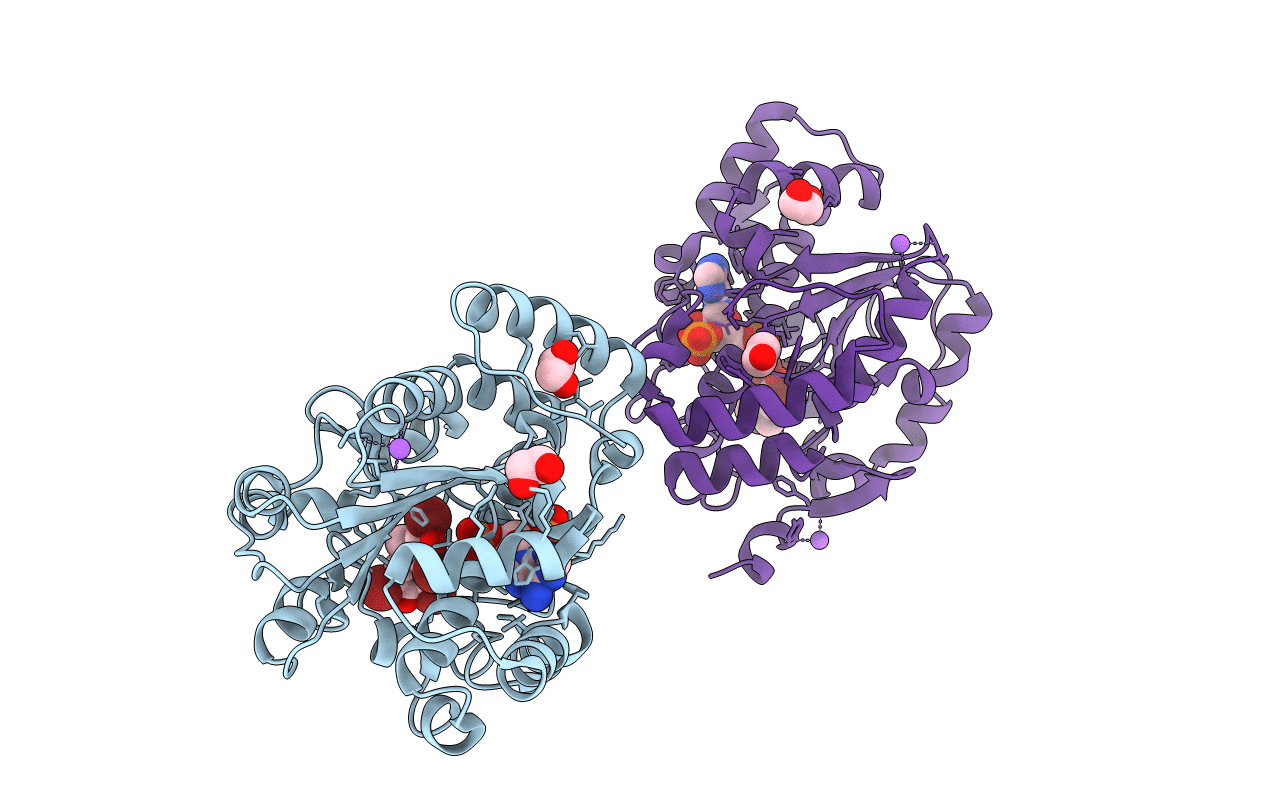
Deposition Date
2013-03-25
Release Date
2013-09-04
Last Version Date
2023-09-20
Entry Detail
PDB ID:
4JVM
Keywords:
Title:
Crystal structure of human estrogen sulfotransferase (SULT1E1) in complex with inactive cofactor PAP and brominated flame retardant TBBPA (tetrabromobisphenol A)
Biological Source:
Source Organism:
Homo sapiens (Taxon ID: 9606)
Host Organism:
Method Details:
Experimental Method:
Resolution:
1.99 Å
R-Value Free:
0.23
R-Value Work:
0.18
R-Value Observed:
0.18
Space Group:
P 1 21 1


